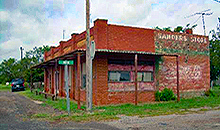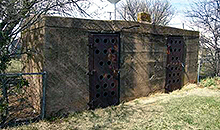Main Menu
Archer County Data
Archer County Communities & Places
Genealogy & History Links by USGHN
Important Archer County Addresses
Sponsors
Archer County Neighbors
Baylor County, Texas Genealogy & History Network
Clay County, Texas
Jack County, Texas
Throckmorton County, Texas
Wichita County, Texas
Wilbarger County, Texas Genealogy & History Network
Young County, Texas
Other Websites
Welcome to Archer County Texas Genealogy & History Network!
Welcome to the Archer County, Texas Genealogy & History Network. Our purpose is to provide visitors with free resources for genealogical and historical research. To share your genealogy or history information, send an email to txghn@outlook.com and we will happily include it here. For other Texas Counties, visit the Texas Genealogy & History Network state website and go to the appropriate county. Thanks for visiting and good luck with your research! |
|
About Archer County, Texas...

Archer County is located in north central Texas. The Big Wichita, the Little Wichita, the West Fork of the Trinity, and the Brazos rivers drain the County.
Before white settlement, Apaches, Wichitas, Tawakonis, Kichais, Caddoes, Comanches, and later Kiowas camped and hunted in the area now known as Archer County. Spaniards and Anglos crossed through the area at various times, and in the eighteenth century French traders operated a post close to the two small mesas in the west central area later called Little Arizona. By 1875 the United States Army had driven all the Indians from North Texas and the area was open to settlement.
In 1874 the first American settler, Dr. R. O. Prideaux, originally from England, settled on the West Fork of the Trinity River in southeastern Archer County. He had observed that the buffalo he had shot there were fat. Soon other cattlemen and farmers moved in, and scattered herds of longhorn cattle were introduced to different parts of the county's grasslands. Along with buffalo hunters, the pioneer cattlemen led the way  for other American settlers by eliminating great herds of buffalo and antelope.
for other American settlers by eliminating great herds of buffalo and antelope.
Meanwhile, farmers were also moving into the area. Colonists located vacant or unpatented lands throughout the county and built dugout or log, board, or stone houses. Over 400 acres was planted in corn in the county in 1880, and smaller areas were planted with oats and wheat. In November 1879 farmers combined with the small ranchers in Archer County and presented a petition to the commissioners' court of Clay County calling for the political organization of Archer County. Larger cattle interests, bitterly opposed to organization, protested and delayed the process, but in the spring of 1880 the court ordered an election. Archer County was organized on July 27 of that year.
Railroads played an important role in attracting settlers to the county during the late nineteenth and early twentieth centuries. This railroad construction helped to tie the county to the national marketplace, and  encouraged immigration into the area. Ranching declined somewhat during this period, but continued to be a crucial mainstay of the local economy.
encouraged immigration into the area. Ranching declined somewhat during this period, but continued to be a crucial mainstay of the local economy.
Before and after the onset of the depression, agricultural fluctuations were offset by petroleum production. Oil was discovered in Archer County in 1911, and by 1930 the county was a major shallow producer. World War II helped to stimulate oil activity even further. Production in the county gradually declined, however, and by January 1, 2001, more than 489,066,000 barrels of oil had been taken out of Archer County lands since 1911.
An annual rodeo, a livestock show, and a rattlesnake roundup provide entertainment. Archer County has produced two fiction writers of national stature, Benjamin Capps and Larry McMurtry.
The county has a total area of 925 square miles, of which 903 square miles is land and 22 square miles  (2.4%) is water. The population recorded in the 1880 Federal Census was 596. The population peaked in 1930 at 9,684. The 2010 census recorded 9,054 residents in the county.
(2.4%) is water. The population recorded in the 1880 Federal Census was 596. The population peaked in 1930 at 9,684. The 2010 census recorded 9,054 residents in the county.
Neighboring counties are Wichita County (north), Clay County (east), Jack County (southeast), Young County (south), Throckmorton County (southwest), Baylor County (west), and Wilbarger County (northwest). The county seat is Archer City. Other communities in the county include Holliday, Scotland, Wichita Falls (Partial), Lakeside City, Megargel, Windthorst, Dundee, Mankins, Anarene, and Huff.
Archer County, Texas Records
Birth Records - The Texas Department of State Health Services has records from 1903 to present. Records for the last 75 years considered private and will only be provided to certain individuals. To obtain current information on who may obtain a record, how to submit a request and an official request form, see the Texas Department of State Health Services website or write to Texas Vital Records, Department of State Health Services, P.O. Box 12040, Austin, TX 78711-2040.
For older birth records you will have to write to the County Clerk of the applicable county. The existence of birth records prior to 1903 will vary widely from county to county. Local historical societies and genealogy collections in local libraries may be able to provide some information.
Death Records - The Texas Department of State Health Services has records from 1903 to present. Records for the last 25 years considered private and will only be provided to certain individuals. To obtain current information on who may obtain a record, how to submit a request and an official request form, see the Texas Department of State Health Services website or write to Texas Vital Records, Department of State Health Services, P.O. Box 12040, Austin, TX 78711-2040.
Marriage Records - The Texas Department of State Health Services can provide a verification letter of marriage for Texas marriages from 1966 to present. This is NOT a marriage license. To obtain a certified copy of a marriage license you must contact the County or District Clerk in the county or district where the marriage took place.
Local historical societies and genealogy collections in local libraries may be able to provide some information.
Divorce Records - The Texas Department of State Health Services can provide a verification letter of divorce for Texas divorces from 1968 to present. This is NOT a copy of the divorce decree. To obtain a certified copy of a copy of the divorce decree you must contact the County or District Clerk in the county or district where the divorce took place.
Local historical societies and genealogy collections in local libraries may be able to provide some information.




